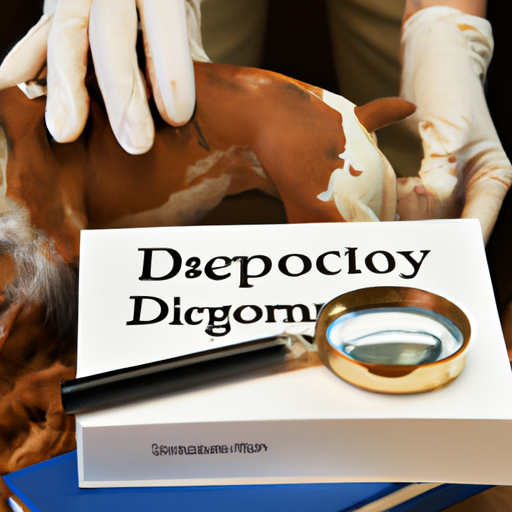1. Understanding Hyperkeratosis
Hyperkeratosis is a skin condition that affects dogs, where excessive keratin is produced. Keratin is a protein that helps protect the skin, but when too much is produced, it can lead to hardened, thickened skin. This often results in discomfort and can even affect your dog’s ability to walk or eat.
Whilst it can be a daunting diagnosis, understanding hyperkeratosis is the first step towards managing it. Your role as a caregiver is crucial. You are the one who can make a difference in your furry friend’s life.
2. Identifying Symptoms
Hyperkeratosis can manifest in two areas: the nose or footpads. Here are the common symptoms you should be looking out for:
- Nasal Hyperkeratosis: Dry, rough, and cracked nose. The nose might appear crusty or have a “cobblestone” texture.
- Footpad Hyperkeratosis: Thickened, hard footpads. You might notice your dog limping or having difficulty walking.
3. Seeking Veterinary Help
When you notice these symptoms, it’s time to consult a vet. They will conduct a thorough physical examination and may take a skin biopsy to confirm the diagnosis. The vet will then determine the best course of treatment depending on the severity of the condition.
4. Treatment Options
Treatment for hyperkeratosis primarily focuses on managing the symptoms and making your dog comfortable. This includes:
-
Topical Treatments: These are creams or ointments that can be applied directly to the affected area. They usually contain ingredients like salicylic acid or urea that help soften and remove the excess keratin.
-
Oral Medications: If the condition is severe, your vet might prescribe oral medications. These are usually vitamin A derivatives that help regulate the production of keratin.
-
Surgical Treatment: In extreme cases, surgical removal of the excess keratin might be necessary.
While there is no cure for hyperkeratosis, these treatments can significantly improve your dog’s quality of life.
5. Home Care and Prevention
In addition to the treatments mentioned, you can also take some steps at home to manage your dog’s condition:
- Regularly check your dog’s nose and footpads for any changes.
- Keep the affected areas clean and moisturized using pet-safe products.
- Regularly trim the hardened skin using a pet-safe grinder.
- Make sure your dog is eating a balanced diet.
| Prevention Tips | Details |
|---|---|
| Regular Check-ups | Regular vet check-ups can help detect the condition early. |
| Balanced Diet | A balanced diet can help manage the condition by providing essential nutrients. |
| Careful Grooming | Avoid over-grooming as it can exacerbate the condition. |
Frequently Asked Questions (FAQs)
Q: Can hyperkeratosis be cured?
A: No, but it can be managed with the right treatment and care.
Q: Is hyperkeratosis contagious?
A: No, it is not contagious.
Q: Can it be prevented?
A: While it can’t be prevented entirely, regular vet check-ups and a balanced diet can help manage the condition.
Remember, as a caregiver, your role is vital. With patience, understanding, and proper care, your furry friend can still have a happy, fulfilling life despite hyperkeratosis.



